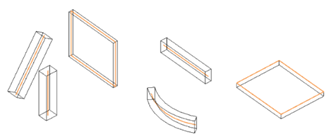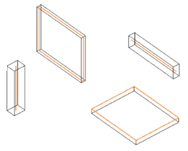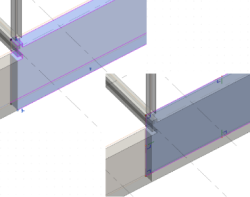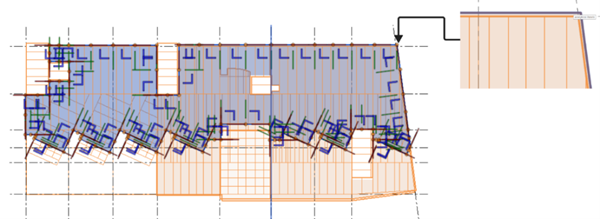Physical to Analytical for Buildings 2025.2 automates the analytical model for most of the structural elements.
Some elements, even if created as Revit structural objects, do not need to be represented in the analytical model (e.g. parapets, partition walls, etc).
As the automation tool analyzes all the structural elements in your selection, it is very important to isolate the ones for which you want to create the analytical representation.
Physical elements for which the analytical model creation process can be automated
- Structural Columns: Vertical and Slanted Columns.
- Structural Framings: Straight line beams and Arc curved beams.
- Floors
- Foundation Slabs
- Walls: Straight line walls.

Physical elements and their associated analytical representation
The automation creates one associated analytical representation for each structural physical element in the form of analytical members for linear elements, or analytical panels for planar elements.

- By the geometrical axis of linear elements.
- By the middle of the structural wall.
- On top of the floor/foundation slab.

The analytical model will be aligned and adjusted later, based on the specific alignment and connectivity rules.
- Material
- Structural Role
- Cross-section: in the form of Family and Type.
- Cross-section rotation.
- Material
- Structural Role
- Structural Layer Thickness
Analytical representation simplification
- The cut-outs made by the structural join in physical elements are ignored:

- The analytical panels for physical floors and foundation slabs are created based on the precise contour of the corresponding physical element.

